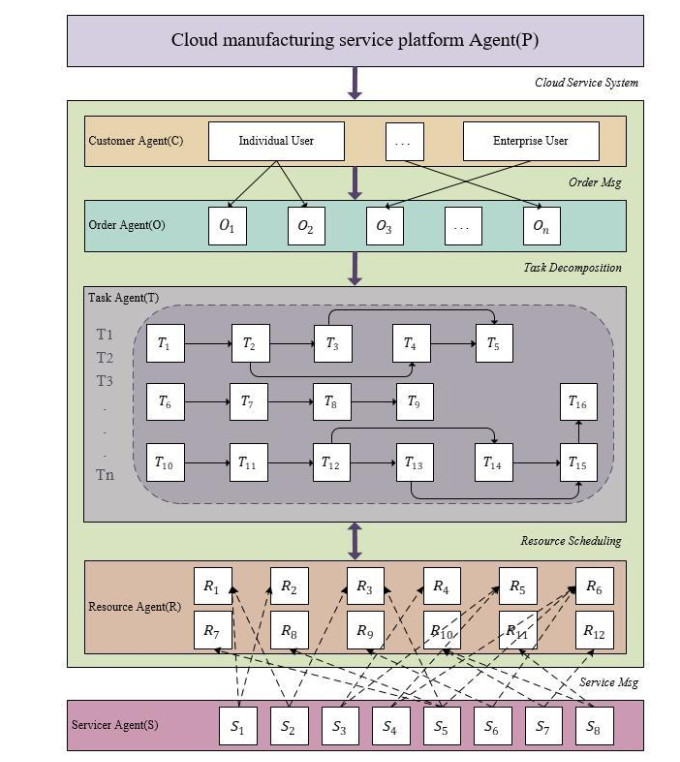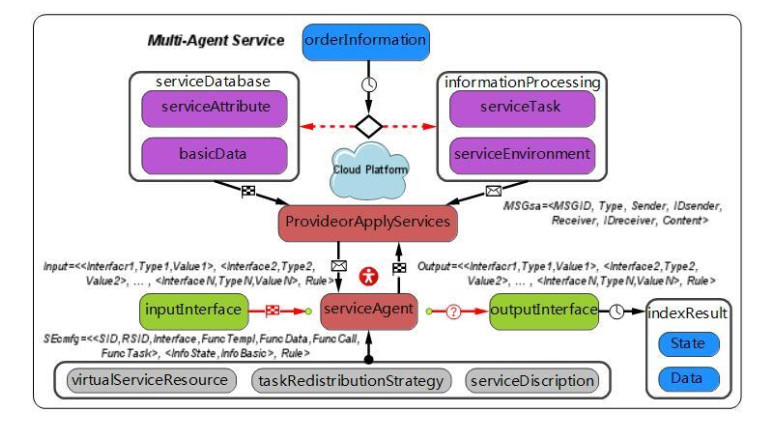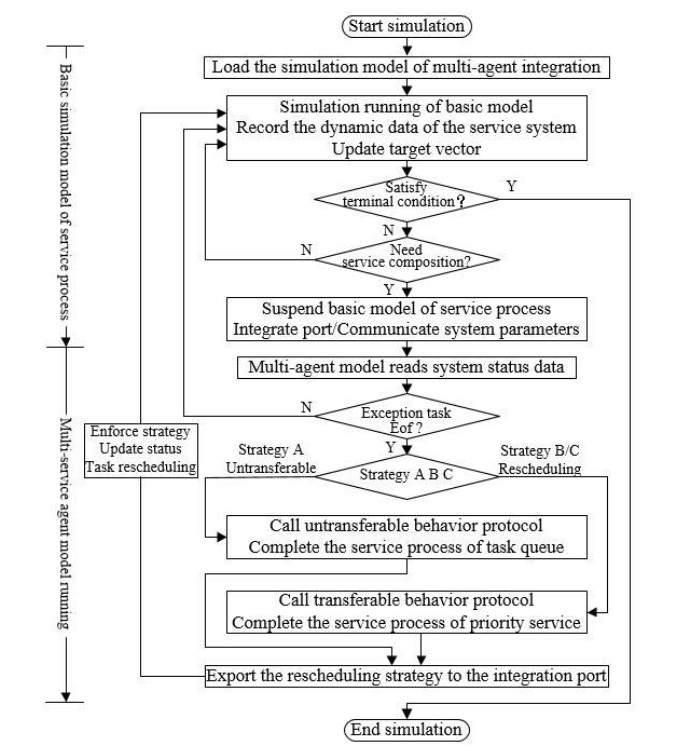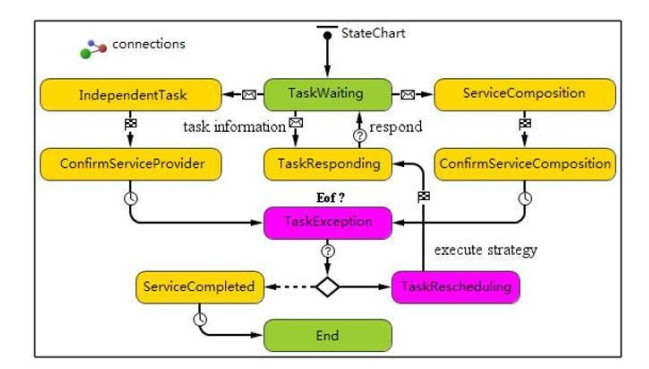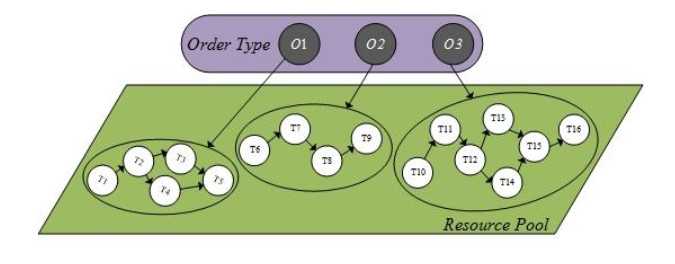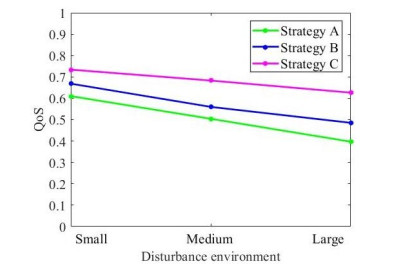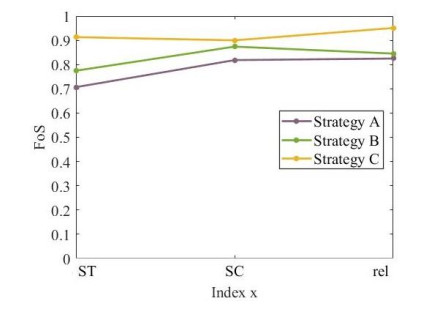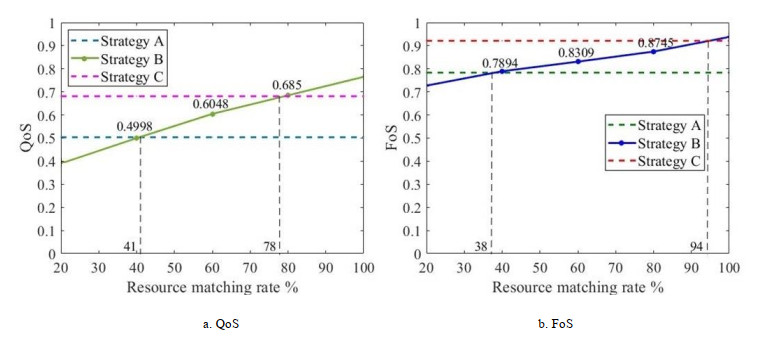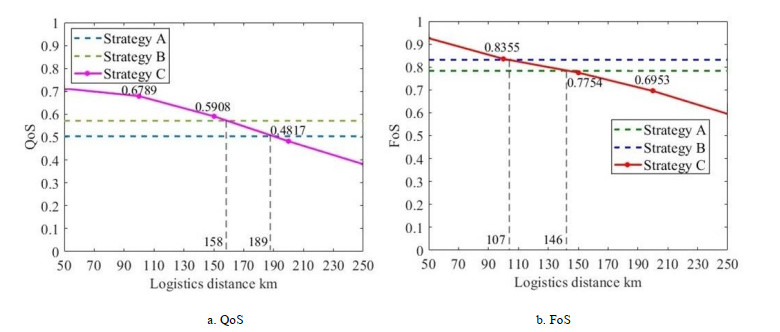1.
Introduction
We are exploring the initial value problem (IVP) defined as:
where f:R×Rm⟶Rm and z0,z′0∈Rm. The above equation is widely applicable in various scientific and engineering contexts. Notably, Eq (1.1) lacks z′.
The Numerov method facilitates the numerical advancement of the solution from tk to tk+1=h+tk, a well-established approach for solving Eq (1.1). It is expressed as:
where zk≈z(tk) and fk≈z′′n=f(tk,zk). Note that fk,zk∈Rm.
Hairer [1], Cash [2] and Chawla [3] introduced hybrid implicit Numerov-type methods (i.e., using non-mesh points) approximately 40–45 years ago. Addressing the P-stability property, crucial for handling stiff oscillatory problems, was the primary challenge then. Chawla [4] proposed the modified Numerov scheme, evaluated explicitly as follows:
where h is a constant step length:
The vectors zk+1,zk, and zk−1 approximate z(tk+h),z(tk), and z(tk−h) respectively, while v1∈Rm,v2∈Rm, and v3∈Rm represent the stages (alternatively named: function evaluations) used by the method.
We utilize the information known at the mesh:
Since f(tk−1,v1) is computed in the previous step, only f(tk+1,v3) and f(tk,v2) need evaluation each step, resulting in only two function evaluations per step.
Tsitouras then introduced a Runge–Kutta–Nyström (RKN)-style method [5], significantly reducing the cost. Consequently, only four steps are required to create a sixth-order method, whereas previous implementations required six function evaluations (see [6]).
Subsequent to this, our group extensively investigated the topic. Tsitouras developed eighth-order methods with nine steps per step in [7]. Ninth-order methods were studied in [8]. Concurrently, a group of Spanish researchers conducted highly interesting work on the same topic [9,10,11].
In this study, we aim to present a new method for better addressing problems with periodic solutions. Traditionally, various properties from a simple test equation are fulfilled for this purpose. The novelty lies in training the available free parameters across a wide set of relevant problems. Differential evolution is employed for this training. It is anticipated that this methodology will yield a method better tuned for oscillatory problems.
2.
Order conditions for hybrid Numerov-type methods
For the numerical treatment of Eq (1.1) with higher-order algebraic methods, there exists a considerable demand. We can represent the independent variable t as one of the components of z (if necessary, add t′′=0 see [12, pg. 286] for details). Consequently, our focus, without loss of generality, lies on the autonomous system z′′=f(z). Subsequently, a hybrid Numerov method with s stages, as delineated in [7], may be expressed as:
where Is∈Rs×s represents the identity matrix, D∈Rs×s,wT∈Rs,a∈Rs denote the coefficient matrices of the method, and
To present the coefficients, we utilize the Butcher tableau [13,14],
The method described in (1.2) can be represented using matrices [8]. As the function evaluations are computed sequentially, these methods are explicit. Therefore, D represents a strictly lower triangular matrix. For the case when s=8, the method takes the following structure:
After assuming [15]
the associated matrices take the form
Given that fk−1 is determined from the preceding stage, seven function assessments are performed per step. To achieve an algebraic order eight, it is imperative to nullify the corresponding error truncation components (refer to [16]).
Our technique encompasses a total of 34 parameters. As noted earlier, there exist 27 coefficients for matrix D, denoted as
Moreover, there are 4 coefficients associated with vector w and 3 elements pertaining to vector a. The quantity of condition equations for various orders matches those of the RKN methods [17,18], as presented in Table 1. To attain an eighth order, a cumulative total of 1+1+2+3+6+10+20+36=79 equations must be fulfilled. The equations up to the ninth order can be found in assorted tables within [16].
The parameters are fewer than the equations, presenting a comparable challenge encountered in devising Runge-Kutta (RK) techniques. Hence, we are compelled to employ simplifying assumptions that diminish the quantity of conditions, thereby also decreasing the number of coefficients. The most prevalent options include
with
and for κ1<κ2
The remaining order conditions are presented in Table 2. In this table, the symbol "*" can be interpreted as element-wise multiplication:
This operation holds lower precedence. Parentheses, exponents, and dot products are always computed prior to "*".
Given the thirteen order conditions outlined in Table 2 and the fulfillment of 17 assumptions (2.2), we determine that only thirty equations are necessary. This results in four coefficients remaining as variables. Let's consider a3,a4,a5, and d64. The issue can be resolved explicitly, and the corresponding efficient Mathematica [19] module is depicted in Table 3.
For comprehensive details regarding the computation of truncation error coefficients, refer to the comprehensive overview in [16]. Coleman [20] emphasized the utilization of the B2 series representation of the local truncation error, drawing connections with the T2 rooted trees.
3.
Phase-lag and amplification errors
In [21], the scalar test problem
was introduced to examine the periodic characteristics of techniques applied to solve (1.1).
Upon employing a Numerov-style approach akin to (2.1) to tackle problem (3.1), a discrete equation is formulated, taking the form
where ψ=ωh, and S(ψ2),P(ψ2) represent polynomials in ψ2.
The periodicity interval (0,ψ0) encompasses all 0<ψ<ψ0 with P(ψ2)≡1 and 0<|S(ψ2)|<2. A method deemed P-stable exhibits ψ0=∞.
The fulfillment of the zero dissipation property necessitates that
ensuring that the numerical method approximating (3.1) remains within its cyclic orbit.
The dissipation order ρ of a method is characterized by the number for which 1−P(ψ2)=O(ψρ). It is worth noting that
A method with algebraic order 2⋅i satisfies the terms in the aforementioned series for j=0,1,⋯,i−1. Consequently, for an eighth order method, it is advantageous to address
to enhance the dissipation order. In the case of a zero-dissipative method, only q9=z11=q13=q15=q17=0 is necessary, and as for the lower triangular matrix D, all other q′-s vanish,
The difference in angles between the numerical and theoretical cyclic solution of (3.1) is called phase-lag. Since the solution of (3.1) is
we may write Eq (3.2) as
with the number τ the phase-lag order of the method. Since
we observe that expression (3.3) is a series of the form
or in a compact form
In this series, λ2=λ4=⋯=λ2i=0 for i=1,2,⋯,⌊p−12⌋+1, where p denotes the algebraic order of the method. For eighth order methods, the order conditions yield λ2=λ4=λ6=λ8=0. Given that p=8, and for i=3, we infer from (3.4):
In case of i=4, we get (observe already that w⋅1=1,w⋅c=0,w⋅D⋅c=0, etc.),
Further we have that,
Then we may ask for simultaneous satisfaction of phase-lag order conditions:
The set of four nonlinear equations (3.5) can be resolved to determine the four independent parameters. Our analysis reveals that the method exhibits a phase error on the order of O(ψ18), whereas the amplification error is O(ψ9). Consequently, the newly devised method demonstrates dissipative characteristics and lacks a periodicity interval.
The free parameters satisfying (3.5) in double precision are the following [15],
and form the method N8ph18 that outperforms other methods in oscillatory problems.
Another noteworthy characteristic is P-stability [2,3]. In this context, it is essential to ensure σ≡1, while also meeting the condition
Only implicit methods are capable of fulfilling these two criteria simultaneously.
4.
Training the free parameters in a wide set of periodic problems
From the aforementioned set, our aim is to create a specific hybrid Numerov-style approach. The resultant technique should excel when applied to challenges exhibiting oscillatory solutions. Therefore, we opt to evaluate the following scenarios for testing purposes.
with the analytical solution z(t)=cos(μx). This scenario was tested using five distinct values of μ: specifically, μ=1,3,5,7,9. These numbers were chosen arbitrarily. Different choices will produce slightly different coefficients. Anyway, Differential Evolution is a metaheuristic method that produces random results in (hopefully) the direction of desired solutions. We may get thousands of results extremely close to each other. Consequently, we have five scenarios denoted as 1–5.
Our current project's primary framework is rooted in [22]. Upon selection of the independent parameters a3,a4,a5,d64, we establish a method termed NEW8. Each scenario undergoes four runs with varying step counts. For each run we evaluated the maximum global error geproblem,steps observed and we record the "accurate digits" i.e., −log10(geproblem,steps). The mean value r, computed over these 20 problems, serves as an efficacy metric to be optimized. To facilitate this optimization, we employ the differential evolution technique [23].
DE operates through iterative steps, where each iteration, or generation g, involves a "population" of individuals (a(g)3,i,a(g)4,i,a(g)5,i,d(g)64,i), i=1,2,⋯,N, with N denoting the population size. The initial population (a(0)3,i,a(0)4,i,a(0)5,i,d(0)64,i), i=1,2,⋯,N is randomly generated in the first step. Furthermore, we designate r as the fitness function, computed as the average precision over the 20 aforementioned runs. This fitness function is then assessed for each individual within the initial population. In every generation (iteration) g, a three-step sequential process updates all individuals involved, consisting of Differentiation, Crossover, and Selection.
We utilized MATLAB [24] software DeMat [25] for the implementation of the aforementioned technique. Indeed, notable enhancements were achieved through selection:
The coefficients of the new method in matrix forms are given below, which are suitable for double precision computations.
and
With this approach, we achieved a value of approximately r≈9.24, which demonstrates remarkable performance. In fact, numerous methods yielding r>9.1 were obtained, indicating the presence of a narrow range of parameter combinations a3,a4,a5,d64 where r reaches elevated levels. It is noteworthy that in the current configuration, the amplification differs from unity (σ≠1), and the phase lag is on the order of O(v8), implying ρ=O(v8), where ρ8≠0. Moreover, no specific property is satisfied under these conditions.
In Table 4 we present the results for the new method and the method N8ph18 presented in [15] that was especially formed for addressing oscillatory problems. For this latter method we observe a performance ρ≈7.82 which is much smaller.
5.
Numerical results
The NEW8 method was designed to excel following multiple iterations on model scenarios. In the assessments outlined in Table 4, it was anticipated to outperform alternative methods for the specified intervals and step counts.
Hence, we aim to subject NEW8 to a distinct array of challenges, encompassing varying intervals and step counts. To this end, we re-evaluate problems 1–5 over an extended interval [0,20π]. These problems are now labeled as 1′,2′,⋯,5′. Additionally, we introduce two additional nonlinear problems and a wave equation to broaden the scope of evaluation. Specifically, we consider:
5.1. The inhomogeneous problem
with the theoretical solution z(t)=cos(10t)+sin(10t)+sint.
5.2. The Duffing equation
Next, we choose the equation
with an approximate analytical solution given in [16],
5.3. Wave equation
Finally, we consider the linearized wave equation, which is a rather large-scale problem [16],
with the theoretical solution
We discretize ϑ2uϑx2 using fourth-order symmetric differences for internal points, while boundary points utilize one-sided differences of the same order (while considering the information about ϑuϑx at those points). This results in the following system:
Here, z0,z1⋯zN may be understood as coordinates of z∈RN+1, and not as time steps. Upon selecting Δx=5, we establish a system with constant coefficients and N=20. The outcomes for this scenario were primarily influenced by the errors arising from the semi-discretization process. As a consequence, an error of about 10−6.1 is added constantly to the theoretical solution (5.1). Thus, no method can have a true error smaller than this. But, as shown in Table 5, our new method even though it has limited accuracy, is faster (i.e., uses fewer time steps) than N8ph18.
We execute these 8 scenarios with varying step counts and present the outcomes in Table 5. Notably, we also incorporate results obtained using the N8ph18 method. For economy and ease of reading the results, only the best methods of eighth order were tested on oscillatory problems. i.e., NEW8 and N8ph18. N8ph18 has already proven to outperform other 8th order methods [15,16]. It becomes evident from the table that NEW8 significantly outperforms all other methods documented in the literature. Overall, an improvement of nearly one decimal digit in accuracy was achieved.
The proposed method is constructed for application to second order Ordinary Differential Equations (ODEs) with oscillatory solutions. However, this is a rather wide category of problems that is constantly under the interest of respected scholars. As seen from problem 8 (wave equation), our method may also apply to a certain kind of partial differential equations sharing periodic solutions after proper transformation to system of ODEs.
6.
Conclusions
The key aspects of our investigation were as follows:
● We explored a family of eighth-order hybrid two-step techniques characterized by minimal stage counts, with a notable innovation being the proposal of a methodology for selecting appropriate independent parameters.
● The parameters of the novel technique were determined following extensive evaluation of their performance across a diverse array of periodic scenarios.
● Optimal parameter selection was achieved through the application of the differential evolution approach. Across a broad spectrum of challenges featuring oscillatory solutions, the devised approach demonstrated significant superiority over methods belonging to both similar and disparate families.
● The method we introduced is finely calibrated for scenarios with periodic solutions, particularly those featuring substantial linear components.
Author contributions
Both authors of this article have been contributed equally. Both authors have read and approved the final version of the manuscript for publication.
Use of AI tools declaration
The authors declare that no Artificial Intelligence (AI) tools were used in the creation of this article.
Conflict of interest
This work does not have any conflicts of interest.









 DownLoad:
DownLoad:


